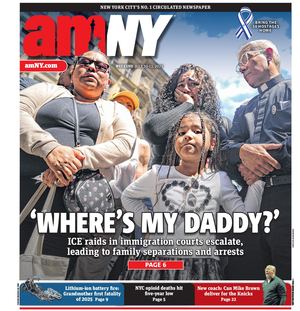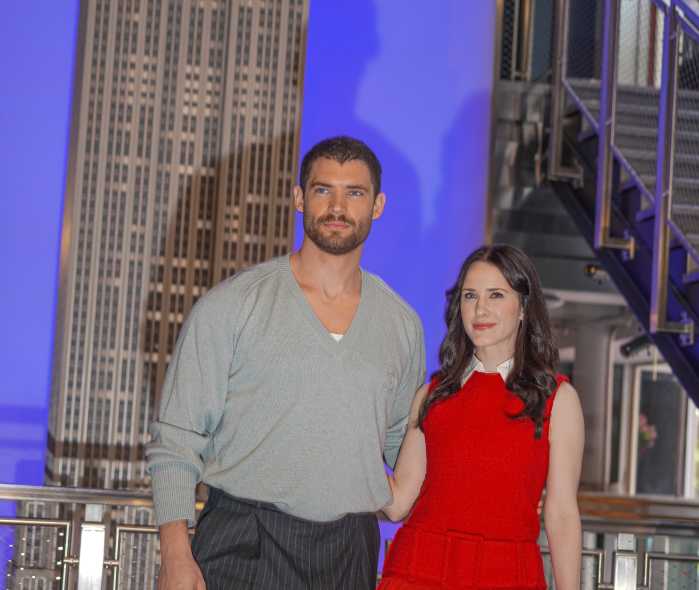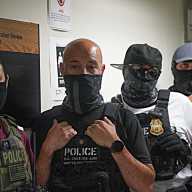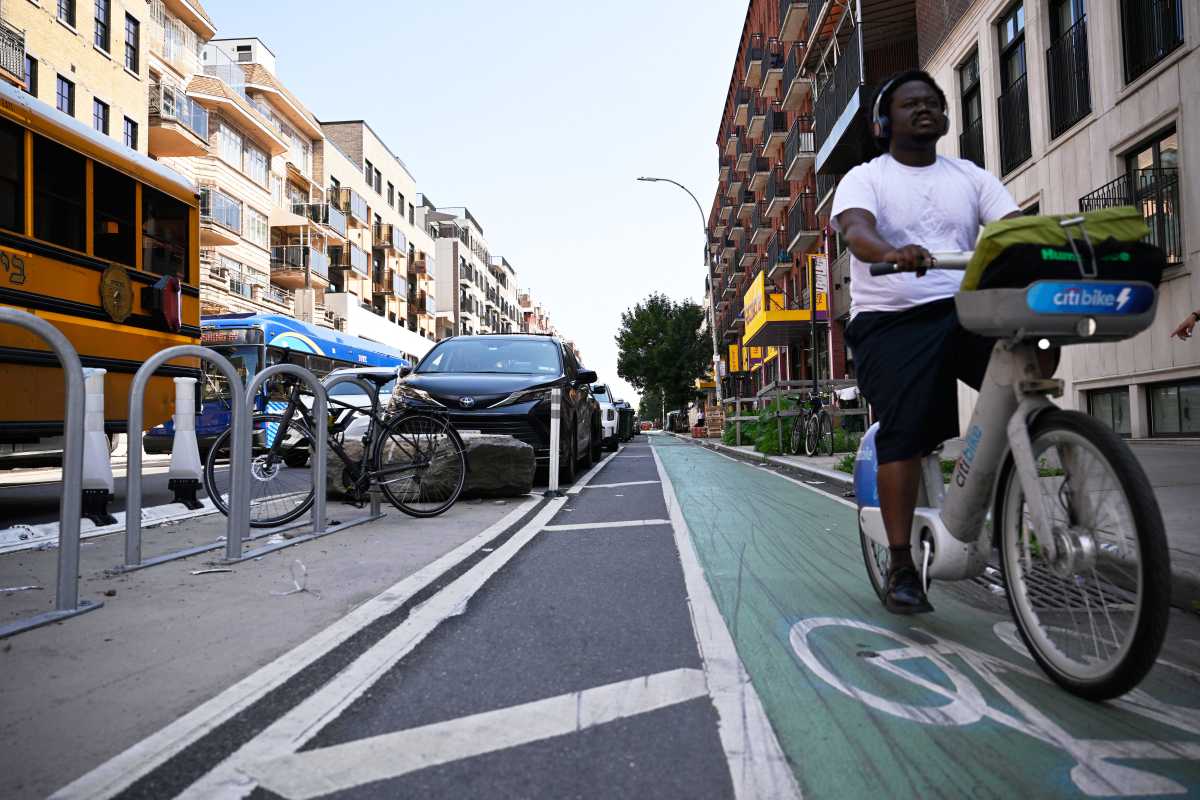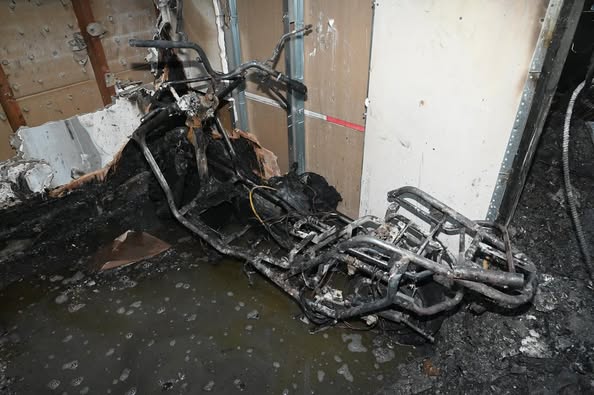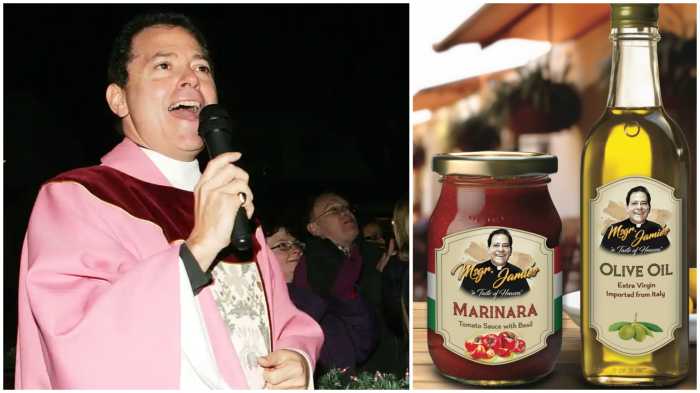Director and cinematographer Reed Morano is one of the most sought out visual artists in the industry.
She’s worked as a cinematographer with the likes of Martin Scorsese on HBO’s “Vinyl” and Beyoncé with her video for “Sandcastles” off her “Lemonade” album. She worked double duty on her first directorial debut “Meadowland,” also doing DP duty.
To date, her biggest acclaim is directing the first three episodes for the first season of Hulu’s “The Handmaid’s Tale” for which she won an Emmy for Outstanding Directing for a Drama Series. And now she’s recently signed a deal with Amazon Studios for a streaming series.
It’s her extraordinary attention to detail by capturing a shifting tone in a room while collaborating in the sound design of her work that brings you into these very different worlds. Simply put, as an artist, Morano never holds the audience at arm’s length.
True to her latest project, Reed Morano’s second directorial feature, “I Think We’re Alone Now” — a post-apocalyptic story, starring Peter Dinklage and Elle Fanning — is a quiet study of the human connection and how loneliness inhabits people differently when two polar opposites connect. Dinklage praised Morano’s sensibilities as an artist, “I have never been in surer hands, felt more confident to challenge myself.”
The Emmy-winning director sat down with amNewYork to discuss her creative journey and directing “I Think We’re Alone Now.”
You’ve been working in this industry for some time but have reached new heights in the last year or so. How do you define success now, especially with the ebbs and flows of the industry?
It’s really hard to say. If you’re doing what you like and you’re getting paid to do it and you’re working with people that you love, you’ve already found success. It’s really subjective what success is but for me, it’s just the fact that my job can be making a movie, even when I was just DPing. To me, that felt like a goal unlocked.
Did you feel a certain switch happen where you could have this cachet as a filmmaker to choose your own projects?
Yeah, when I was coming up as a DP and trying to get more experience by working with certain directors, I didn’t have the luxury. It evolved over time. I thought when the time comes, I’ll figure out a way how to. But before I felt ready, the opportunity fell into my lap and people were pushing me to do it. It came from other people seeing in me what I wasn’t a hundred percent sure I saw in myself. I think I have the mentality where, when a project comes my way I have to consider it, but now that my time is so limited I don’t have the luxury to say yes to every project.
When you’re DPing and directing, is that something that’s seamless for you or are you constantly switching gears?
It’s probably harder if I go for a long time without DPing. On the ones that I don’t DP, I do operate the camera on and off. In “Handmaid’s Tale,” I mostly operated the camera on my three episodes and that’s because the DPs I work with … are so collaborative and they knew I wasn’t taking the camera because I thought I could do better than them. It’s because it was an artistic need that I have so they were confident enough to let me do that when I felt it was appropriate. The ones where I DP and direct at the same time, it’s deeply satisfying because I can scratch that itch the whole time and don’t have to worry about stepping on anyone’s toes. I think I’m always going to go back and forth.
“I Think We’re Alone Now” explores loneliness and how these two people deal with it in very different ways. Can you talk about that?
That’s what I liked about it. You couldn’t find two more opposite characters. Imagine you got stuck with someone you would never relate to outside of the apocalypse. It’s about the judgments we pass on people based on judging a book by their cover. What I’ve learned from working on movies is you become friends with people that you normally wouldn’t and they become your best friend, and you’re a total odd couple. When you think you know what you need when you’re faced with the finality of “this is the last person on earth” you really start to evaluate your circumstances.
Even though this is an apocalyptic world, as a viewer seeing the American flag wasting away and the imagery of abandoned Americana, symbolically it feels familiar to our times in this dreadful way. Did you have our current politics in mind when you were filming this?
Oh yeah! It was pretty much a few months later into the presidency. There were some jokes that were in the movie that got cut. I thought it would’ve been funny if she found in one of the houses, an old, tattered, “Make America Great Again” hat. It was a pretty sick joke where she would be cleaning the house with the hat on. We did shoot the scene and it was so funny but I wasn’t sure if anyone was going to get it. But we had that running through our head and because I made that hat a thing it was like, “What if this is it? Maybe this is the last one before the whole world goes to s—?” That’s what I was thinking when I was making it.
There’s a certain way that you capture vulnerability that feels very intimate. How did you approach that?
It’s about holding the camera there long enough to capture a moment, to allow the audience to see them dealing with a situation. The character has to transform. Sometimes on paper — I know there’s an intention for the character to have all these dimensions, but the actor has to bring that and the director’s job is to capture that and guide it. Maybe on paper Del [Peter Dinklage’s character] is a curmudgeon and meticulously organized. But in our version, we wanted to capture a conflicted individual. He has an interesting duality to him where he is self-sufficient but you don’t know what you need until it’s right in front of you.
Did preparing for this movie give you any insight into how you would survive this kind of world?
You kind of always think about stuff like that because you do so much research as a director to back up what’s happening in the movie. I learned that gasoline is a very valuable commodity and that wasn’t in the script. … We added a detail of where they siphon gas from every house that they can. I also went into supermarkets and checked how long it would take for things to expire. If you’re very thorough the audience isn’t asking those questions they’re just going along with it because you’re telling them that it’s working.
Since we’re in this specific post-apocalyptic world and they’re the only two people left, the way sound was used really intriguing. How did you decide the relationship sound would have in this film?
Thank you for noticing that. The first movie I directed, I discovered that sound is a powerful tool to have in my toolbox because as a cinematographer I could only affect the picture. I knew once I got into the editing room for the first time, I had this idea of let’s send subliminal messages through the sound. I just automatically dove into the sound which isn’t too weird because I do relate to music in a way. I don’t always know what scenes are going to have extracurricular sound but I have a hunch so when I get into the editing the challenge becomes how am I going to do this one differently? What are the new sounds I’m going to discover?
Do you put together a sound palette?
You can, but I think what happens is I usually attack it on a scene-by-scene basis. With each scene, we wanted to evoke a certain feeling. The scene where is looking at the photographs of the people and you start hearing all the voices of those people, I didn’t know I was going to do that but then it just seemed right. The first time I remember doing something really cool with sound is in “Meadlowland” where [Olivia Wilde’s character] is in the bathroom of a gas station. I took a line from her son in the movie, who went missing, and ran the line backward. As she breathes out you hear it faintly as if it’s coming out of her mouth.
